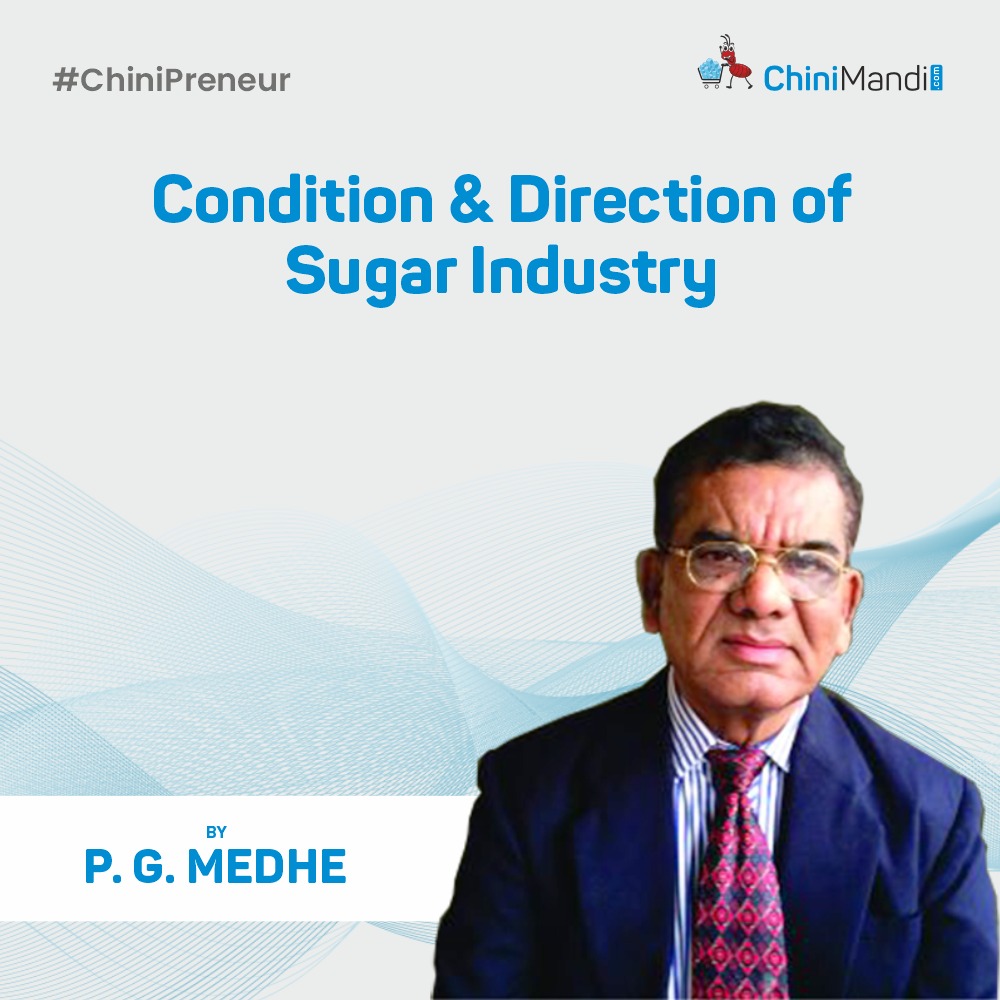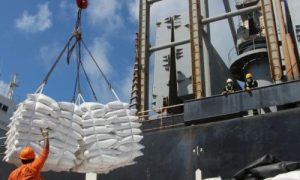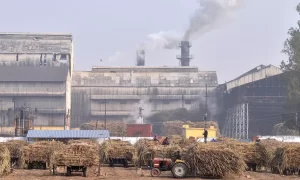Present status, challenges and opportunities for sugar season 2024-25

The Indian sugar industry faces challenges like water scarcity, pest infestations, and financial stress due to a mismatch between the Fair and Remunerative Price (FRP) and Minimum Support Price (MSP). However, growth prospects lie in ethanol blending, sustainable practices, technological advancements, and favorable export opportunities, positioning the industry for resilience and innovation in the 2024-25 season.
As the Indian sugar industry gears up for the 2024-25 crushing season, commencing on October 1st, it stands at a critical juncture. This season promises to be a defining period, marked by a blend of formidable challenges and promising opportunities. The industry, a cornerstone of India’s agricultural economy, faces a dynamic landscape shaped by fluctuating market conditions, evolving government policies, and the pressing need for sustainable practices. This article delves into the multifaceted challenges that lie ahead, from climate variability and water scarcity to global market volatility and regulatory shifts. Simultaneously, it explores the avenues for growth and innovation, highlighting the potential for technological advancements, diversification into biofuels, and the adoption of environmentally friendly practices. As stakeholders navigate this complex terrain, the 2024-25 season could well set the stage for a more resilient and forward-looking Indian sugar industry.
ZONE WISE NATURAL CONDITIONS: Sugarcane cultivation in India benefits from diverse climatic and soil conditions across different zones. Here’s a zone-wise breakdown of the natural conditions favorable for sugarcane growth:
1) Northern Zone-
States: Uttar Pradesh, Punjab, Haryana, Bihar
Climate: Hot summers and cool winters. Ideal temperatures range from 21°C to 27°C.
Rainfall: 75-150 cm annually.
Soil: Loamy soils rich in nitrogen, calcium, and phosphorus.
Challenges: Frost during winter can be detrimental, so timely harvesting is crucial12.
2) Central Zone-
States: Maharashtra, Madhya Pradesh, Gujarat
Climate: Hot and dry with significant temperature variations.
Rainfall:50-100 cm annually, supplemented by irrigation.
Soil: Black cotton soils and loamy soils.
Challenges: Water scarcity and the need for efficient irrigation practices12.
3) Southern Zone-
States: Tamil Nadu, Karnataka, Andhra Pradesh
Climate: Warm and humid throughout the year.
Rainfall:75-150 cm annually, with both monsoon and post-monsoon showers.
Soil:Red loamy soils and laterites.
Challenges: Managing water during dry spells and ensuring soil fertility12.
4) Eastern Zone-
States: West Bengal, Odisha, Assam
Climate: Humid and tropical with high rainfall.
Rainfall:150-200 cm annually.
Soil: Alluvial soils rich in organic matter.
Challenges: Excessive rainfall can lead to waterlogging and reduced sugar content12.
5) Western Zone-
States: Rajasthan, Gujarat (partially)
Climate: Arid to semi-arid with hot summers.
Rainfall: Less than 50 cm annually, heavily reliant on irrigation.
Soil: Sandy loams and alluvial soils.
Challenges: Extreme temperatures and water scarcity.
These conditions highlight the adaptability of sugarcane to various environments, but also underscore the importance of region-specific agricultural practices to optimize yield and quality.
ZONE WISE PRESENT STATUS OF SUGAR CANE CROP:
1) Northern Zone –
States: Uttar Pradesh, Punjab, Haryana, Bihar
Status:The sugarcane crop in this region is progressing well, thanks to favorable monsoon rains. However, there are concerns about potential frost damage as the season progresses.
2) Central Zone-
States: Maharashtra, Madhya Pradesh, Gujarat
Status :Maharashtra and Karnataka have seen improved reservoir levels due to timely monsoon rains, which is expected to boost yields. However, water management remains crucial in this semi-arid region.
3) Southern Zone-
States: Tamil Nadu, Karnataka, Andhra Pradesh
Status: The crop is in good condition with adequate rainfall and irrigation support. Tamil Nadu, in particular, has benefited from consistent monsoon showers.
4) Eastern Zone-
States: West Bengal, Odisha, Assam
Status :High rainfall has generally been beneficial, but excessive moisture in some areas has led to concerns about waterlogging and its impact on crop health.
4) Western Zone-
States: Rajasthan, Gujarat (partially)
Status: This region relies heavily on irrigation. The crop is stable, but water scarcity remains a persistent challenge.
Overall, the 2024-25 season is expected to see strong sugarcane production across most regions, with improved yields anticipated due to favorable monsoon conditions.
CURRENT STATUS OF PEST INFECTIONS ZONE WISE : Here’s the current status of pest infestations in sugarcane crops across different zones in India:
1) Northern Zone-
Common Pests: Sugarcane top borer, root borer, and white grubs.
Current Status:There have been reports of moderate infestations of top borers and root borers. Farmers are advised to monitor their fields closely and adopt integrated pest management practices.
2) Central Zone-
Common Pests: Sugarcane woolly aphid, stem borer, and pyrilla.
Current Status: Woolly aphid infestations have been observed in some areas, but timely interventions have kept the situation under control. Stem borer presence is also noted but manageable with regular monitoring.
3) Southern Zone-
Common Pests: Sugarcane internode borer, early shoot borer, and scale insects.
Current Status: The internode borer is a significant concern in this region, with some fields experiencing high infestation levels. Farmers are using biological control methods and insecticides to manage the pest1.
4) Eastern Zone-
Common Pests: Sugarcane top borer, root borer, and woolly aphid.
Current Status: The top borer and woolly aphid are prevalent, particularly in West Bengal. Integrated pest management strategies are being recommended to control these pests.
5) Western Zone-
Common Pests: White grubs, termites, and stem borers.
Current Status: White grub infestations have been reported, especially in irrigated areas. Farmers are advised to use soil treatments and maintain field hygiene to mitigate the impact.
Overall, pest management remains a critical aspect of sugarcane cultivation across all zones. Farmers are encouraged to adopt integrated pest management practices, including biological controls, chemical treatments, and regular field monitoring to minimize crop losses.
POSITION OF THE ENSUING CRUSHING SEASON 2024-25: The sugar season 2024-2025 is shaping up to be quite dynamic, influenced by several key factors:
1. Availability of Sugarcane-
Increased FRP: The Fair and Remunerative Price (FRP) for sugarcane has been increased from ₹3150 to ₹3400 per tonne. This hike is expected to incentivize farmers to cultivate more sugarcane, potentially increasing its availability1.
2. Domestic Sugar Consumption-
Rising Demand:Domestic sugar consumption has reached upto 290 lakh metric tonnes (MT). This increase in demand will require efficient production and distribution to meet the needs.
3. Minimum Support Price (MSP) and Ethanol Prices-
Proposals for MSP Increase: There are ongoing discussions about increasing the MSP of sugar, which would help stabilize the market and ensure fair returns for producers.
Ethanol Prices: Proposals to increase ethanol prices are also under consideration. This could boost the ethanol blending program, providing an alternative revenue stream for sugar mills.
4. Export of Sugar-
Export Opportunities: With global sugar prices remaining high, there are favorable conditions for exporting sugar. This could help balance domestic supply and demand, and improve the financial health of sugar mills2.
5. Ethanol Blending-
Blending in Diesel and Petrol:The government is considering blending 5% ethanol in diesel, in addition to the existing 20% blending in petrol. This initiative aims to reduce fossil fuel dependence and promote cleaner energy sources.
6. Environmental Considerations-
Sustainable Practices:Emphasis on sustainable agricultural practices and efficient water usage will be crucial to mitigate environmental impacts and ensure long-term viability of sugarcane farming1.
7. Global Sugar Production-
Expected Decline: Global sugar production for 2024-2025 is expected to be slightly lower than the previous season, with projections around 180.3 million tonnes. Despite this, global consumption remains strong3.
8. Market Dynamics-
Price Stability:The combination of increased domestic consumption, potential MSP hikes, and strong export opportunities is likely to stabilize sugar prices. The government’s policies on ethanol blending and support prices will play a significant role in shaping the market dynamics.
Overall, the 2024-2025 sugar season appears promising with increased production incentives, rising domestic consumption, and favorable export conditions. However, careful management of resources and adherence to sustainable practices will be essential to navigate the challenges and opportunities ahead. <This message was edited>
MAIN CHALLENGES BEFORE THE SUGAR SEASON 2024-25: The Indian sugar industry faces a multitude of challenges that impact its efficiency, profitability, and sustainability. Here are some of the major issues as far as ensuring sugar season 2024-25.
1. Mismatch in FRP and MSP-
Fair and Remunerative Price (FRP): The FRP is the minimum price that sugar mills must pay to sugarcane farmers. It is set by the central government.
Minimum Support Price (MSP): The MSP is the minimum selling price of sugar at which sugar mills have sale their sugar in domestic market.
Challenge: The FRP declared for the sugar season is ₹ 3400 per ton which is much higher than the MSP ₹ 3100 per quintal , leading to financial stress for sugar mills as they struggle to cover costs and maintain profitability. It will be difficult for the sugar factories to pay the FRP in time, if MSP of sugar is not revised before the startup of crushing operations.
2. Cost-Effective Ethanol Prices-
Ethanol Blending Program: The government promotes ethanol blending with petrol to reduce dependence on fossil fuels.
Challenge: The prices set for ethanol procurement sometimes do not cover the production costs, making it less attractive for sugar mills to divert sugarcane for ethanol production. These prices are required to be linked with Sugarcane FRP and MSP of sugar.
3. Harvesting and Transport Labour Availability-
Labour Shortage:There is a significant shortage of skilled labor for harvesting and transporting sugarcane.
Challenge: This leads to delays in harvesting, increased costs, and potential losses in sugar content due to delayed processing.
4. Availability of Harvesting Machines-
Mechanization: The use of harvesting machines can mitigate labor shortages.
Challenge: High costs and limited availability of these machines make it difficult for many sugar factories to adopt mechanized harvesting.
5. Sugar Inventory Carrying Cost-
Inventory Management: High levels of unsold sugar stocks lead to increased carrying costs.
Challenge: This ties up working capital and affects the financial health of sugar mills.
6. Ban on Export-
Export Restrictions: Periodic bans or restrictions on sugar exports to control domestic prices.
Challenge: These restrictions can lead to surplus stocks and financial losses for sugar mills.
7. Restructuring of Loans-
Financial Stress: Many sugar mills are under financial stress due to high debt levels.
Challenge: Restructuring loans and ensuring the availability of working capital loans are crucial for the smooth functioning of mills.
8. Long-Term Consistent Government Policies-
Policy Stability: Frequent changes in government policies create uncertainty.
Challenge: Consistent and long-term policies are needed to provide a stable environment for investment and growth.
9. Amendment to Sugar (Control) Order 1966-
Challenge: New proposed draft of amendment if finalised without considering the suggestions of the sugar Industry, different types problems such as operational, increasing cost, legal mismatching etc will crop up.
10. Other Challenges-
Climate Change: Unpredictable weather patterns affect sugarcane yield and quality.
Water Management: Efficient use of water resources is critical, especially in water-scarce regions.
Sustainability: Adopting sustainable agricultural practices to reduce environmental impact.
Addressing these challenges requires a coordinated effort from the government, industry stakeholders, and farmers to ensure the long-term viability and growth of the Indian sugar industry.
FUTURE PROSPECTS- The Indian sugar industry is poised for significant growth and transformation, driven by various government initiatives and market dynamics. Here’s a detailed look at the future prospects:
1. Ethanol Blending and Biofuels-
Maximum Ethanol Blending: The government’s push towards maximum ethanol blending in petrol (20%) and diesel (5%) is a game-changer. This initiative not only reduces dependency on fossil fuels but also provides a lucrative alternative revenue stream for sugar mills1.
Subsidised Funds:The establishment of the new Cooperation Ministry and support from the National Cooperative Development Corporation (NCDC) for soft loans will facilitate the establishment of new ethanol, bio-CNG, CBG, and Green Hydrogen plants.
2. Technological Advancements in the Automobile Industry-
Engine Modifications:Collaboration with the automobile industry to modify engines for ethanol-blended fuels and develop innovative engines that run on 100% ethanol is crucial. This will ensure a seamless transition to cleaner fuels1.
3. Environmental Sustainability-
Soil Productivity and Cane Development: Support for programs aimed at improving soil productivity and developing high-yield, disease-resistant cane varieties will enhance sustainability.
Power Co-generation and Solar Power: Encouraging power co-generation and solar power generation within sugar mills will reduce their carbon footprint and promote renewable energy.
4. Financial and Policy Support-
Soft Loans and Subsidies:The government’s provision of subsidised funds for establishing new ethanol and biofuel plants will lower the financial burden on sugar mills and encourage investment in sustainable practices.
Minimum Support Price (MSP):Proposals to increase the MSP of sugar will ensure fair returns for producers and stabilize the market.
5. Research and Development-
Innovative Solutions: Investment in R&D for developing new technologies and practices in sugarcane farming and processing will drive efficiency and productivity.
Trading Facilities: Enhancing trading facilities and infrastructure will improve market access and competitiveness.
6. Social and Economic Impact-
Employment and Livelihoods: The sugar industry supports millions of livelihoods. Government initiatives aimed at improving working conditions and providing financial stability to farmers and workers will have a positive social impact.
Community Awareness: Efforts to raise community awareness about sustainable practices and waste management will foster a culture of environmental responsibility1.
7. Global Market Dynamics-
Export Opportunities: With global sugar prices remaining favorable, India has the potential to increase its sugar exports, thereby improving the financial health of the industry.
World Sugar Production: While global sugar production is expected to be slightly lower, strong consumption will keep demand high, benefiting Indian exporters.
The future of the Indian sugar industry looks promising, with a favorable environment for addressing challenges and achieving sustainability. Government initiatives, technological advancements, and a coordinated approach across various sectors will drive growth and innovation. By focusing on environmental sustainability, financial support, and community engagement, the industry can look forward to a bright and sustainable future.
The future prospects for the Indian sugar industry are exceptionally promising. With a favorable environment fostered by government initiatives and technological advancements, the industry is set to undergo a significant transformation. As sugar becomes a by-product and the focus shifts to the production of ethanol and other biofuels, sustainability will see marked improvement. This shift will address many of the current challenges, benefiting cane cultivators through better returns and stable income. Moreover, the industry’s contribution to reducing valuable foreign exchange expenses on crude oil imports cannot be overstated. By fulfilling the government’s ambitious target of supplying 1000 crore litres of ethanol for blending, the industry will play a crucial role in achieving energy security and environmental sustainability. In summary, the Indian sugar industry is on the brink of a new era, with better prospects and a brighter future. The coordinated efforts across various sectors will not only enhance the industry’s economic viability but also contribute significantly to the nation’s sustainable development goals.
P.G. Medhe is the former Managing Director of Shri Chhatrapati Rajaram Sahakari Sakhar Karkhana Ltd and sugar industry analyst. He can be contacted at +91 9822329898.
Source Link : https://www.chinimandi.com/present-status-challenges-opportunities-for-sugar-season-2024-25/














